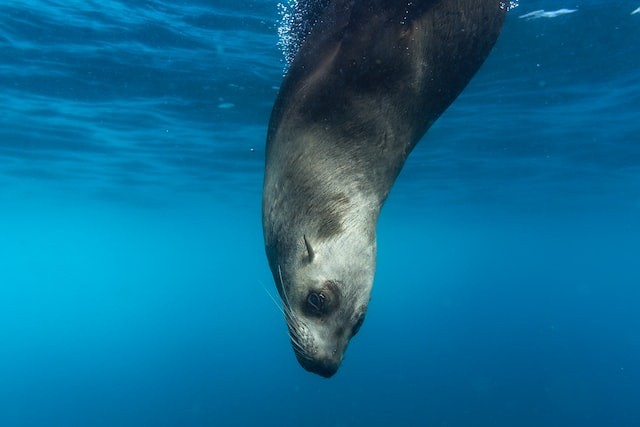Human hair dye is being used on Australian sea lions at Carnac and Seal Islands off the coast of Perth in an innovative new project to track and learn about the local population.
Edith Cowan University (ECU) is co-leading the project with marine researchers from the Department of Biodiversity, Conservation, and Attractions (DBCA), in collaboration with the Department of Primary Industries and Regional Development (DPIRD).
hair dye is helping the conservation of Australian sea lion

The Australian sea lion (ASL) project is part of the Westport Marine Science Program at the Western Australian Marine Science Institution (WAMSI), as per Phys.org.
The hair dye marks are temporary and completely safe, just like human hair color, but they allow us to identify each sea lion and monitor how frequently they move among the six haul-out islands, such as Carnac Island and Seal Island, for about two months.
This project also allows for the monitoring of total numbers that occur in the Perth metropolitan area when the animals are at their peak, which is expected to be around December or January, according to ECU Associate Professor Chandra Salgado Kent.
The marking method, which has been used on other species of seals and sea lions in the past, is non-invasive and causes no harm to the animals.
A layer of dye is spread on foam numbers, and the numbers are mounted on a plate attached to a long pole, which is then pressed onto the sea lion's back or side.
The expert team, which includes DBCA, ECU, and ANU researchers, DBCA and Werribee Open Range Zoo wildlife veterinarians, and DBCA and DPIRD marine rangers and wildlife officers, is also using satellite tags.
"We're trying to figure out how many sea lions use the area and where they might be foraging," explained Kelly Waples of the DBCA.
To accomplish this, we will equip a small number of sea lions with satellite tracking devices.
These tags are a small package that is unobtrusively glued to the fur on their back, just behind their shoulders, and will be retrieved from the sea lions a few months before the animals fully molt.
The satellite tags have already been successfully attached to four sea lions that have also been dyed with hair dye.
Male sea lions typically migrate between breeding islands in the Jurien Sea and haul-out sites in the Perth metro area, with many using the Perth metro area during non-breeding seasons.
The satellite trackers will aid in the collection of high-resolution data on where they forage and what habitat is required for them to find and capture their prey.
Understanding which habitats are important will help researchers better understand how to manage and protect this endangered species, which has seen a 60% decline in numbers over the last 40 years.
Read more: Overexposure to Hair Dye May Cause Cancer
What effects do hair dyes have on the environment?
These dye chemicals endanger the environment because when people wash commercial hair dyes, they enter our water supply system via sewage and end up in bodies of water such as rivers, streams, and the world's oceans, where they are harmful to aquatic life, as per Our Endangered World.
You may also be unaware of the presence of chemicals in your drinking water because most water treatment plants do not filter out the illegal chemicals found in commercial dye.
You may also be unaware of the presence of chemicals in your drinking water because most water treatment plants do not filter out the illegal chemicals found in commercial dye.
Many people do not consider the impact of putting chemicals on their bodies until it causes harm to other parts of the environment, which is why it is critical to be aware of how your personal choices affect the environment.
It is the world's third most popular cosmetic. It is estimated that 75% of people in North America use this product, and this figure is increasing year after year.
According to the FDA, these products were sold in 6.5 million units for a total of 303 million dollars in 2010.
You can reduce your environmental impact by using hair dye alternatives instead of chemical dyes. Coloration is a popular alternative that uses natural ingredients rather than chemicals, making it safe for both you and the environment.
Another excellent option is a henna dye, which is made from henna leaves and has coloring properties similar to chemical dyes.
Related article: Blue Jays' Feathers Never Fade: Sophisticated Nanostructures Underlying Birds' Vivid Plumage Revealed In New Study
© 2025 NatureWorldNews.com All rights reserved. Do not reproduce without permission.





